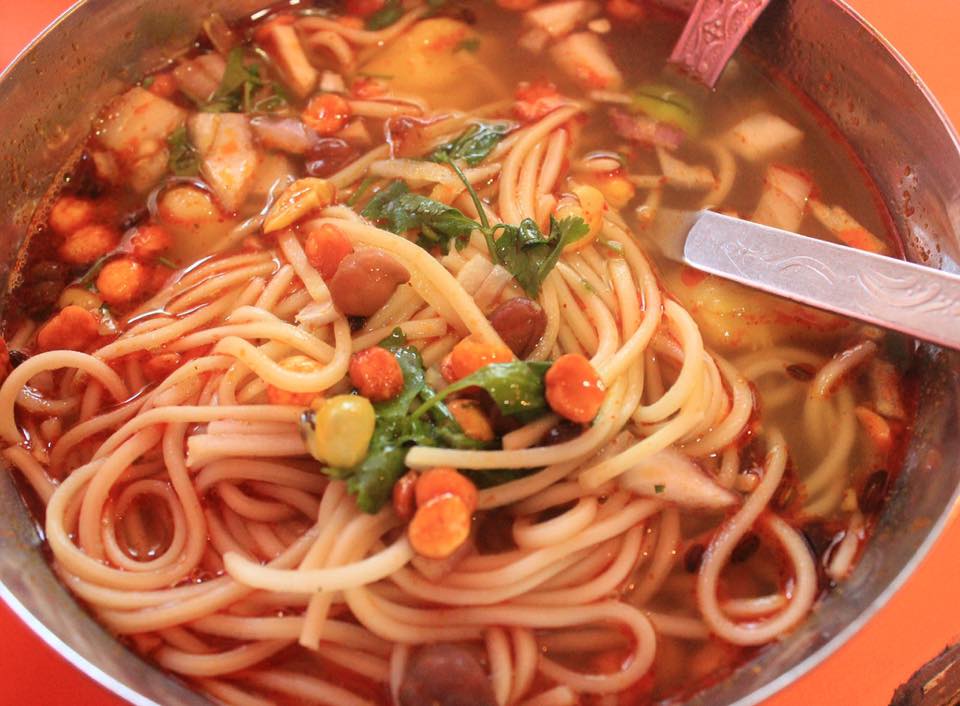|
Thukpa
Thukpa (Tibetan: ཐུག་པ ; ne, थुक्पा; IPA: /tʰu(k̚)ˀ˥˥.pə˥˥/ ) is a Nepali and Tibetan noodle soup, which originated in the eastern part of Tibet. ''Amdo thukpa'' (especially ''thenthuk'') is a famous variant among the Indians (especially Ladakhis and Sikkimis), Tibetans and Nepalese. ''Thukpa'' can be prepared in both vegetarian and non-vegetarian variations; the most popular non-vegetarian variation includes chicken. There are numerous varieties of ''thukpa'' which includes: * ''Thenthuk'' (): Hand-pulled noodle * ''Gyathuk'' (): Chinese noodle * ''Thuppa'' ( ne, थुप्पा) * ''Thugpa'' (): Hand-rolled pinched noodle (like gnocchi) * ''Drethug'' () Etymology Thukpa has been described as a "generic Tibetan word for any soup or stew combined with noodles." Regional traditions Indian thukpa In India, the dish is consumed by people of Nepalese and Tibetan origin in the state of Sikkim, the district of Darjeeling and in the union terr ... [...More Info...] [...Related Items...] OR: [Wikipedia] [Google] [Baidu] |
Thukpa Bhatuk
''Thukpa bhatuk'' is a common Tibetan cuisine noodle soup that includes small ''bhatsa'' noodles. This dish is a common soup made in the winter but is especially important for Tibetan New Year. On Nyi-Shu-Gu, the eve of Losar (Tibetan New Year), the common Tibetan soup, ''thukpa bhatuk'' is made with special ingredients to form ''guthuk''. ''Guthuk'' is then eaten on Losar to symbolise getting rid of negativities of the past year and invite positives into the new year. Soup In the ''thukpa bhatuk'' soup, the main components are the handmade ''bhatsa'' noodles, which are similar to the Italian gnocchi. Some ''bhatsa'' noodles used for this soup are called ''gutsi rithuk'' and another noodle type is called ''bhatuk''. Both of these noodles are referred to as ''bhatuk'' in Central Tibet. Meat is usually a main ingredient in this soup, commonly mutton, beef or yak; however, this soup can also be made vegetarian with a vegetable bouillon. Customs Guthuk At the time of Tibetan New Yea ... [...More Info...] [...Related Items...] OR: [Wikipedia] [Google] [Baidu] |
List Of Tibetan Dishes
This is a list of Tibetan dishes and foods. Tibetan cuisine includes the culinary traditions and practices of Tibet and its peoples, many of whom reside in India and Nepal. It reflects the Tibetan landscape of mountains and plateaus and includes influences from neighbors (including other countries India and Nepal). It is known for its use of noodles, goat, yak, mutton, dumplings, cheese (often from yak or goat milk), butter (also from animals adapted to the Tibetan climate) and soups. The cuisine of Tibet is quite distinct from that of its neighbors. Tibetan crops must be able grow at the high altitudes, although a few areas in Tibet are low enough to grow such crops as rice, oranges, bananas, and lemon. Since only a few crops grow at such high altitudes, many features of Tibetan cuisine are imported, such as tea, rice and others. The most important crop in Tibet is barley. Flour milled from roasted barley, called ''tsampa'', is the staple food of Tibet. It is eaten mostly mixe ... [...More Info...] [...Related Items...] OR: [Wikipedia] [Google] [Baidu] |
Noodle Soup
Noodle soup refers to a variety of soups with noodles and other ingredients served in a light broth. Noodle soup is a common dish across East Asia, Southeast Asia and the Himalayan states of South Asia. Various types of noodles are used, such as rice noodles, wheat noodles and egg noodles. Varieties East Asia China There are myriad noodle soup dishes originating in China, and many of these are eaten in, or adapted in various Asian countries. * Ban mian (板面) – Hakka-style, flat-shaped egg noodles in soup. * Chongqing noodles * Cold noodle (冷面/冷麵) – Shanghai-style, flat noodle stirred with peanut butter sauce, soy sauce and vinegar, served cold. * Crossing the bridge noodles () – ingredients are placed separately on the table, then added into a bowl of hot chicken stock to be cooked and served. The ingredients are uncooked rice noodles, meat, raw eggs, vegetables and edible flowers. The stock stays warm because of a layer of oil on top of the bowl. Typical cui ... [...More Info...] [...Related Items...] OR: [Wikipedia] [Google] [Baidu] |
Indian Cuisine
Indian cuisine consists of a variety of regional and traditional cuisines native to India. Given the diversity in soil, climate, culture, ethnic groups, and occupations, these cuisines vary substantially and use locally available spices, herbs, vegetables, and fruits. Indian food is also heavily influenced by religion, in particular Hinduism and Islam, cultural choices and traditions. Historical events such as invasions, trade relations, and colonialism have played a role in introducing certain foods to this country. The Columbian discovery of the New World brought a number of new vegetables and fruit to India. A number of these such as potatoes, tomatoes, chillies, peanuts, and guava have become staples in many regions of India. Indian cuisine has shaped the history of international relations; the spice trade between India and Europe was the primary catalyst for Europe's Age of Discovery. Spices were bought from India and traded around Europe and Asia. Indian ... [...More Info...] [...Related Items...] OR: [Wikipedia] [Google] [Baidu] |


.jpg)
